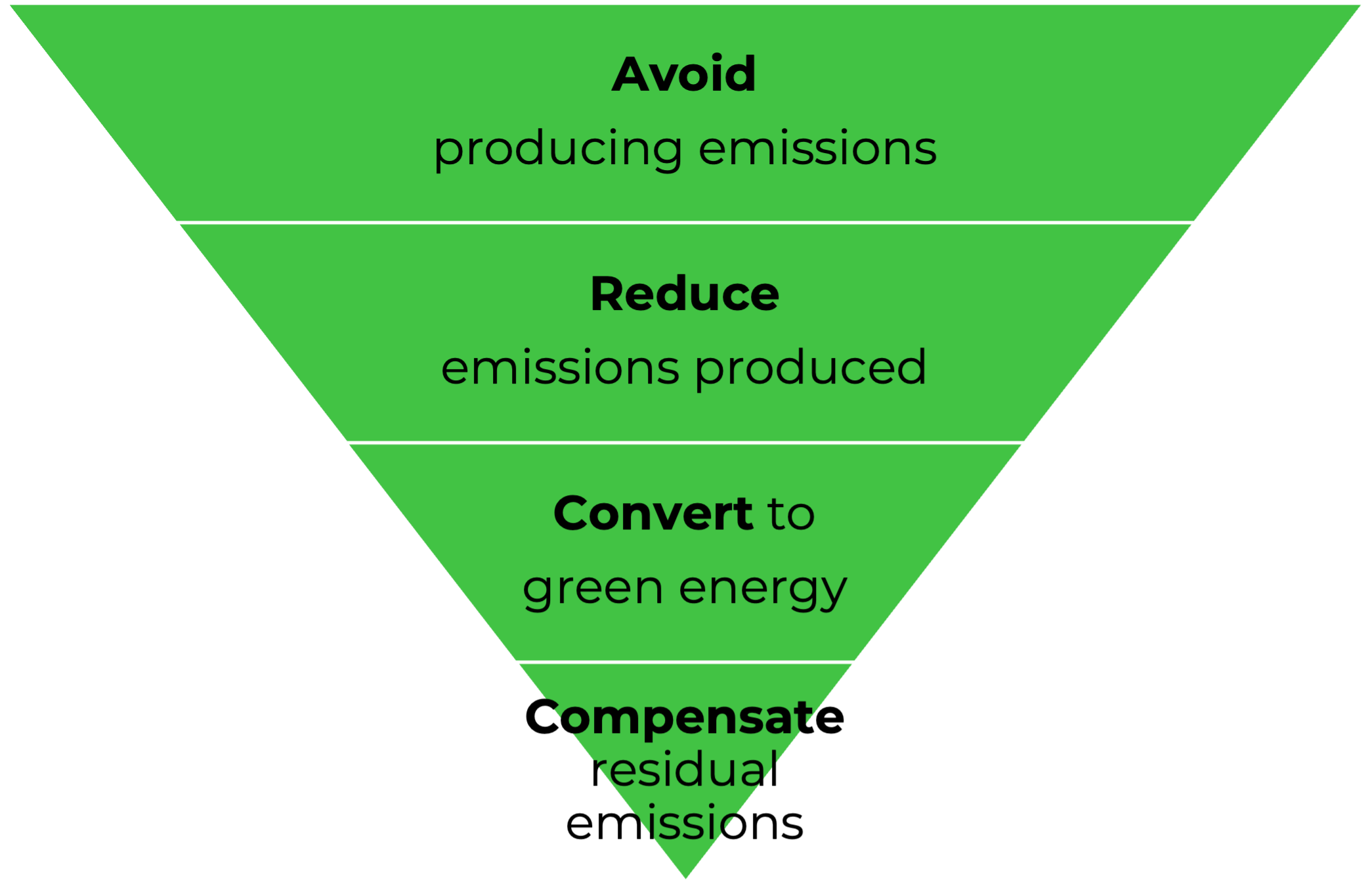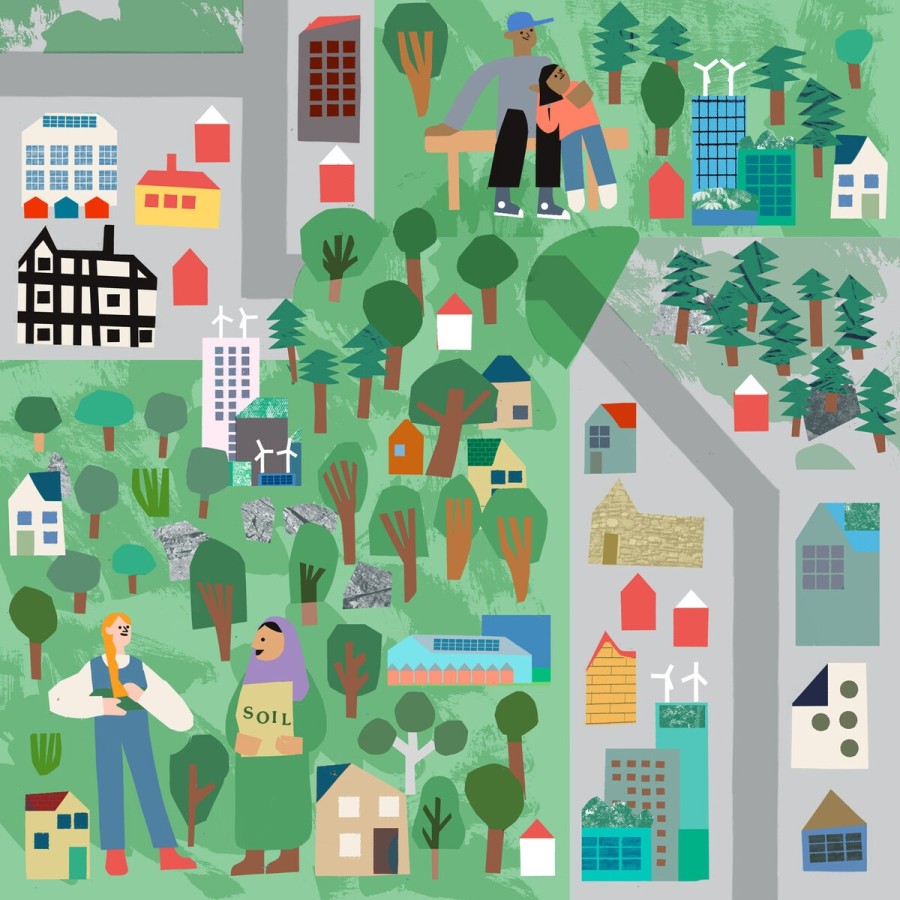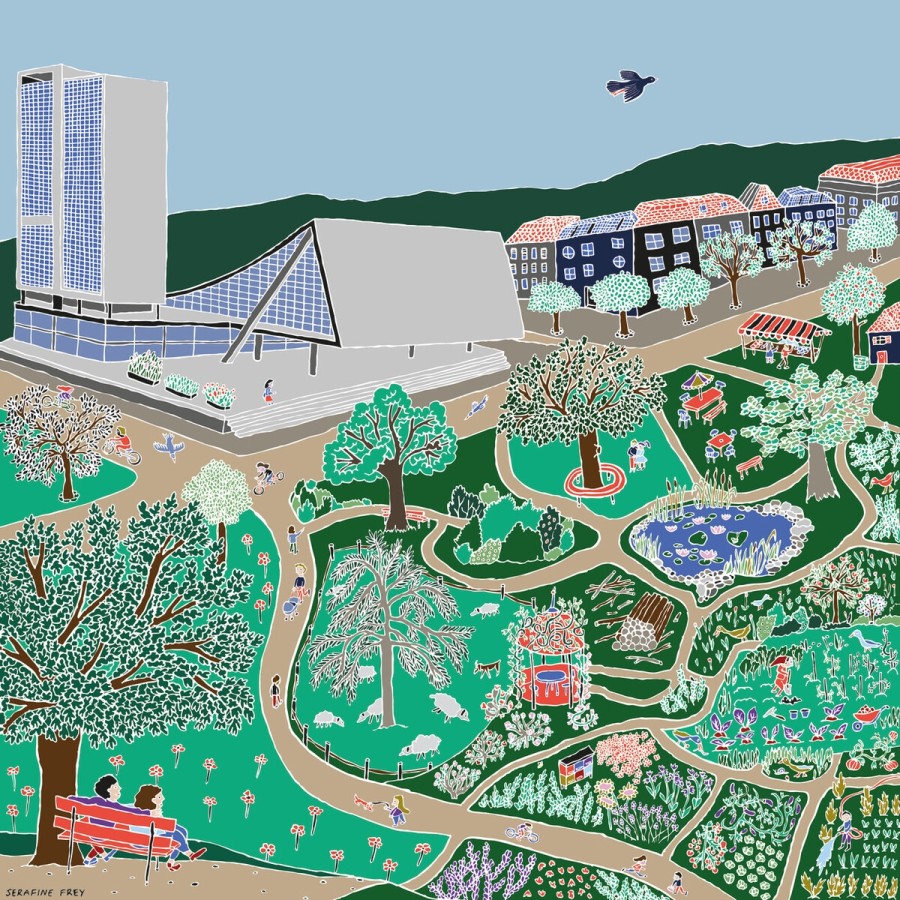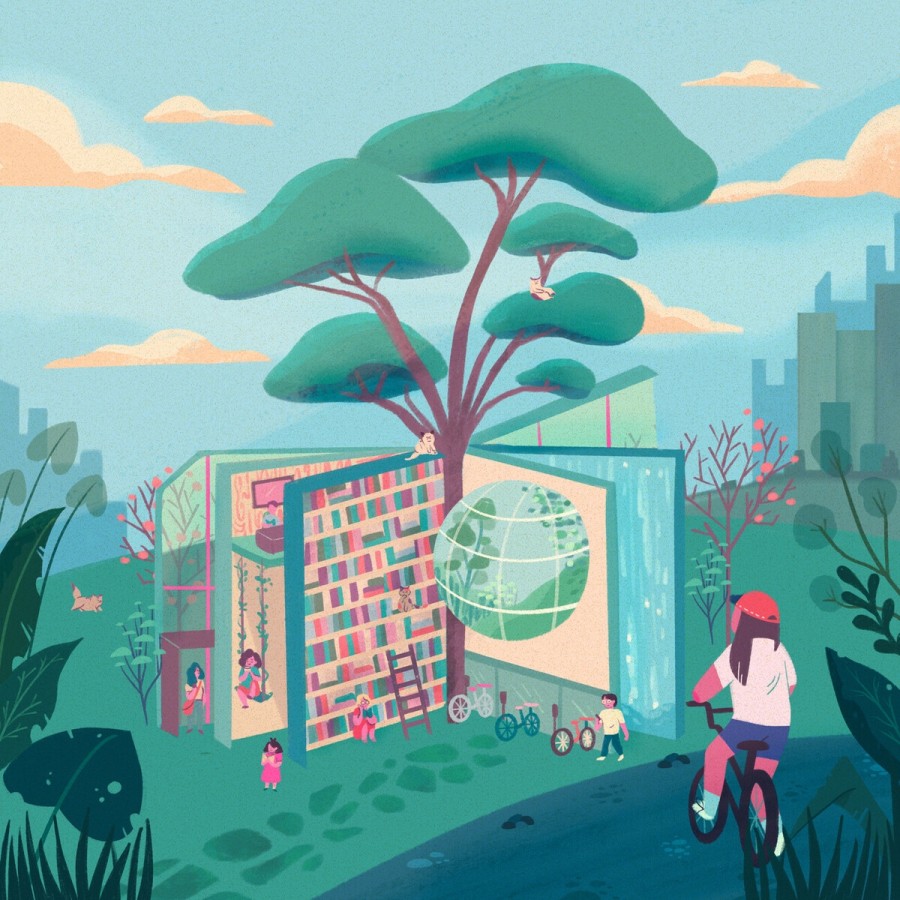To protect all of us, including future generations, we must transform our cities. To avoid climate breakdown, emissions from urban consumption must halve by 2030.
Reducing Greenhouse Gas emissions
A good way to think about how to reinvent our cities and take climate action is to think of the Emissions Reduction Hierarchy.

What does this mean?
For example, make cycle lanes and pedestrian infrastructure to encourage people to cycle instead of drive. This prevents producing emissions from cars.
Reduce: The next approach is to design and develop interventions that reduce emissions.
For example, you could use material from existing buildings when undertaking new construction. This reduces embodied emissions; the greenhouse gas emissions associated with the production, manufacturing, transportation, and installation of building materials.
Convert:After avoiding and reducing emissions, actions should seek to promote green and low carbon technologies.
For instance, you could use electric buses instead of diesel bus fleets.
Compensate:The last approach of the low-carbon hierarchy involves capturing carbon or offsetting carbon.
This should only compensate for unavoidable emissions a city or area produces. This is last on the hierarchy as it does not directly reduce the amount of emissions produced.
Creating wider benefits
By embracing climate action, cities can achieve multiple positive outcomes while addressing the urgent need for climate mitigation and adaptation. Climate action not only addresses climate change, it can also create healthier, more sustainable, and equitable urban spaces.
These include:

Improved Air Quality: Reducing greenhouse gas emissions from transportation and transitioning to cleaner energy sources contributes to improved air quality. This has direct health benefits by reducing respiratory diseases.

Reduced Noise Pollution: Encouraging active transportation and the use of electric vehicles can reduce noise pollution in cities, creating quieter and more livable neighbourhoods.

Improved Public Health: Promoting active mobility and creating green spaces can increase physical activity and improve mental health. Reducing pollution and addressing heat island effects can help mitigate the impacts of extreme heat, benefiting vulnerable populations, particularly the elderly and young children.

Social Equity and Justice: By focusing on accessibility, affordable housing, and public transportation, climate action can contribute to a fairer and more just urban society. Climate actions that address social inequities help reduce disparities and create more inclusive cities.

Cost Savings: Climate action often involves improving energy efficiency in buildings, which can reduce energy consumption and lower utility bills for residents and businesses. Energy-efficient buildings also tend to provide more comfortable living and working environments.

Good, Green Job Creation and Opportunities: Transitioning to a low-carbon economy can create new job opportunities in sectors such as renewable energy, energy efficiency, waste management, sustainable transportation, healthcare and other emerging industries.

Increased Resilience: Measures to enhance city resilience to extreme weather such as floods, storms, and heatwaves protect vulnerable communities. It can improve the resilience of critical infrastructure and reduce the costs of climate-related disasters.

Biodiversity Conservation: Creating green spaces improves the overall quality of life for city residents, and also enhances urban biodiversity.
Questions?
If you have a question or would like more details on the Students Reinventing Cities competition, please use the form below. You will receive a response via email.





